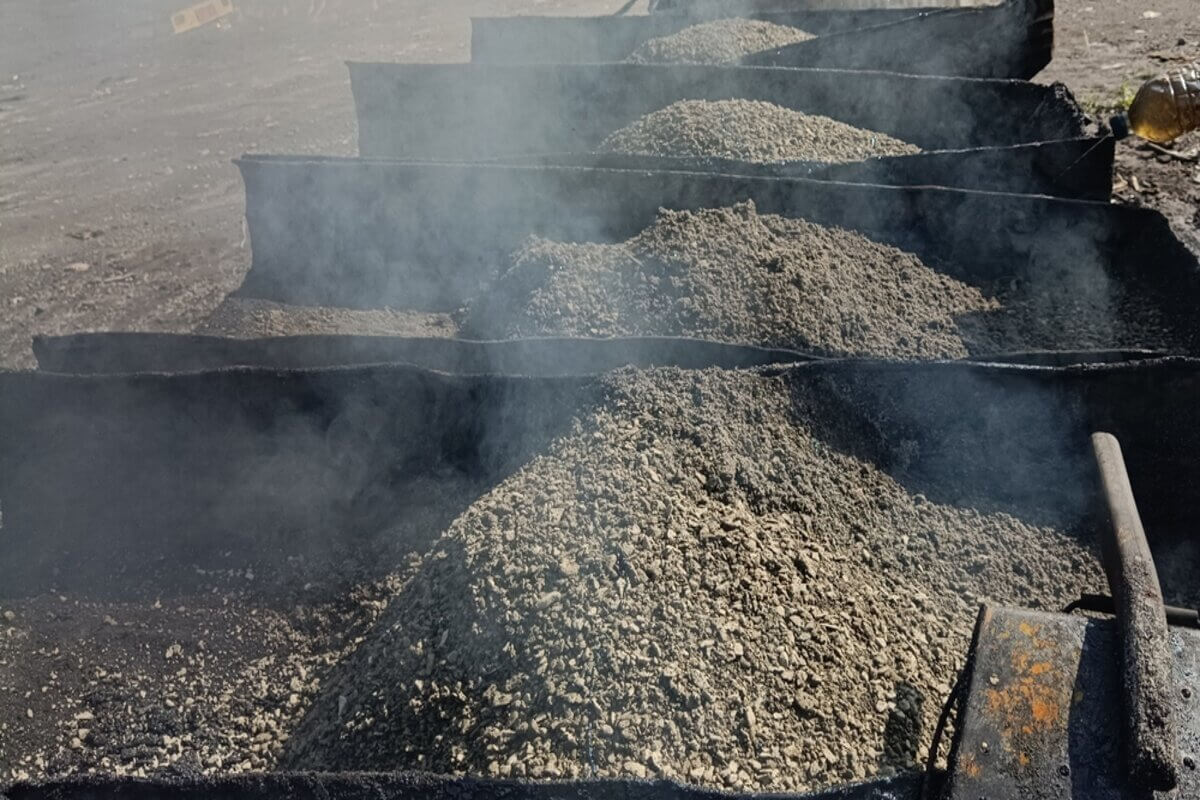Unlocking the Tricks of Hot Mix Asphalt Innovation
Checking out the midsts of warm mix asphalt innovation discovers a globe where exact formulas and careful procedures converge to shape our roadways and framework. The combination of binders, aggregates, and fillers isn't simply a construction task yet a critical orchestration of longevity and performance. As we peer right into the elaborate dance of parts, a tapestry of strength and sustainability unravels. But what lies under this surface area of asphaltic mastery, and what secrets wait to be introduced in the realm of paving technologies?
Significance of Hot Mix Asphalt
Hot Mix Asphalt plays a critical duty in modern infrastructure growth because of its toughness and cost-effectiveness. As one of the most typically made use of paving product for roadways, freeways, and car park, Hot Mix Asphalt supplies a range of advantages that add to its relevance in building and construction jobs. One vital benefit is its capability to stand up to rush hour tons and harsh climate condition, providing a dependable and durable surface area for transport networks. Furthermore, Warm Mix Asphalt is cost-efficient in both first construction and long-term maintenance, making it a recommended choice for several infrastructure tasks.
The durability of Warm Mix Asphalt comes from its composition, that includes aggregates, binder, and filler products that are very carefully selected and mixed to meet specific performance demands. This accurate combination results in a adaptable and strong sidewalk that can sustain frequent use without considerable wear and tear. Moreover, Warm Mix Asphalt is 100% recyclable, further boosting its sustainability and environmental advantages. On the whole, the significance of Warm Mix Asphalt in infrastructure growth can not be downplayed, as it proceeds to be a keystone of modern construction methods.
Parts of Asphalt Mixes
The make-up of asphalt mixes is composed of carefully picked accumulations, binder, and filler materials that are vital for attaining particular efficiency requirements. Accumulations are the primary part of asphalt blends, providing strength and stability. The binder, normally asphalt or asphalt concrete, holds the accumulations with each other and provides flexibility and sturdiness to the mix.
The mix and percentage of these parts play a substantial duty in determining the quality and performance of the asphalt mix. Engineers carefully develop the mix to meet particular requirements, considering elements like traffic volume, climate problems, and sidewalk life-span. Appropriate choice and balancing of aggregates, binder, and fillers are important for creating durable, long-lasting asphalt sidewalks.
Combining and Manufacturing Methods
Once the accumulations are picked, the binder, often asphalt cement, is included in bind the materials with each other. The binder's top quality and quantity significantly impact the mix's resistance, strength, and flexibility to environmental factors. Furthermore, fillers like moisturized lime or Rose city concrete may be included to boost specific features of the asphalt mix, such as its workability or wetness resistance.
During manufacturing, the accumulations and binder are warmed, typically in between 250-325 ° F(121-163 ° C ), to promote blending and make sure proper covering of the accumulations. The blending process has to be detailed to accomplish a homogeneous mixture that advertises the preferred performance features of the asphalt. Numerous techniques, such as set blending or drum mixing, are utilized to accomplish top notch and regular asphalt blends for construction jobs.
Variables Affecting Asphalt Performance
Variables influencing asphalt efficiency incorporate more info here a series of variables that influence the toughness, durability, and overall high quality of asphalt pavements. One crucial factor is the high quality of materials utilized in the asphalt mix. The kind and source of accumulations, the binder quality, and the additives all play a substantial function in establishing the performance of the asphalt sidewalk. The gradation of accumulations is essential as it influences the mix's workability, resistance, and security to rutting and breaking.

Environmental problems also affect asphalt performance. Temperature level variations, wetness seepage, and traffic tons can all impact the structural honesty of the pavement. Style factors to consider, such as pavement density and water drainage, are necessary in ensuring the lasting performance of the asphalt pavement. By very carefully considering these specialists, designers and variables can optimize asphalt performance and enhance the service life of pavements.
Lasting Practices in Asphalt Innovation

WMA permits for the production and positioning of asphalt mixes at reduced temperatures compared to typical hot-mix asphalt, resulting in decreased energy usage and greenhouse gas emissions. The use of permeable asphalt mixes can assist minimize stormwater overflow concerns by allowing water to infiltrate via the pavement and into the ground, promoting all-natural water filtration and charge procedures.
Conclusion
In verdict, warm mix asphalt technology plays a vital function in modern infrastructure development due to its toughness and cost-effectiveness. By meticulously stabilizing parts, using correct blending strategies, and taking into consideration numerous variables, designers can develop high-grade asphalt blends that hold up against hefty website traffic lots and extreme weather. Accepting sustainable practices, such as using warm-mix modern technologies and recycled products, additionally improves the environmental friendliness of asphalt modern technology.
Blending and production techniques in warm mix asphalt innovation include the precise mix and handling of aggregates, binder, and fillers to create a sturdy and high-performance asphalt mix.Aspects influencing asphalt performance incorporate a variety of variables that impact the durability, long life, and general quality of asphalt pavements. Lasting methods in asphalt technology incorporate various campaigns intended at reducing the ecological effect of asphalt manufacturing and paving procedures. By incorporating redeemed asphalt pavement (RAP) and recycled asphalt tiles (RAS) into brand-new asphalt mixes, the sector can here are the findings dramatically decrease the intake of raw products and energy, while also lowering garbage dump waste.
WMA allows for the production and positioning of asphalt mixes at reduced temperature levels compared to typical hot-mix asphalt, resulting in reduced power consumption and greenhouse gas discharges.